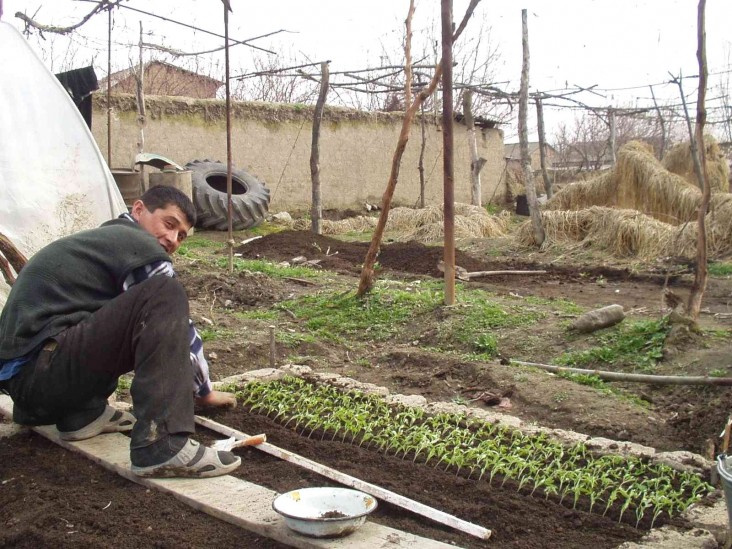
Kyrgyzstan is a mountainous country where only seven percent of the land is suitable for agriculture. After the fall of the Soviet Union, the previous collective farms were privatized among the communities, splitting the land into 0.04-0.20 hectare (.09 - .49 acre) allotments per person.
The yield of many crops also decreased during this transition, mainly due to the absence of agricultural knowledge of the new owners and the loss of markets.
To increase rural incomes, USAID launched an agricultural project to help develop profitable agricultural product value chains in Kyrgyzstan. The project assisted rural communities by improving agricultural extension and to make these farms more attractive to agribusiness in the value chain.
Together with local partner organizations, the project organized more than 950 tomato-growing farmers in the Osh and Jalalabat Regions into groups and taught them the basics of cropping, farm economics, tomato and tomato seedling production, business planning, and marketing.
With the project’s assistance, participating farmers increased their tomato yield by 10.3 tons per hectare (about 2.5 acres) on average from their 230 hectares (568 acres) of land. The increase yield resulted in more than $300,000 in additional income for the participating farmers.
In addition to increasing profits, the project facilitated large, group quantity purchases of fertilizers, seeds, and other inputs, thus resulting in a more than 20% decrease in the price.







Comment
Make a general inquiry or suggest an improvement.